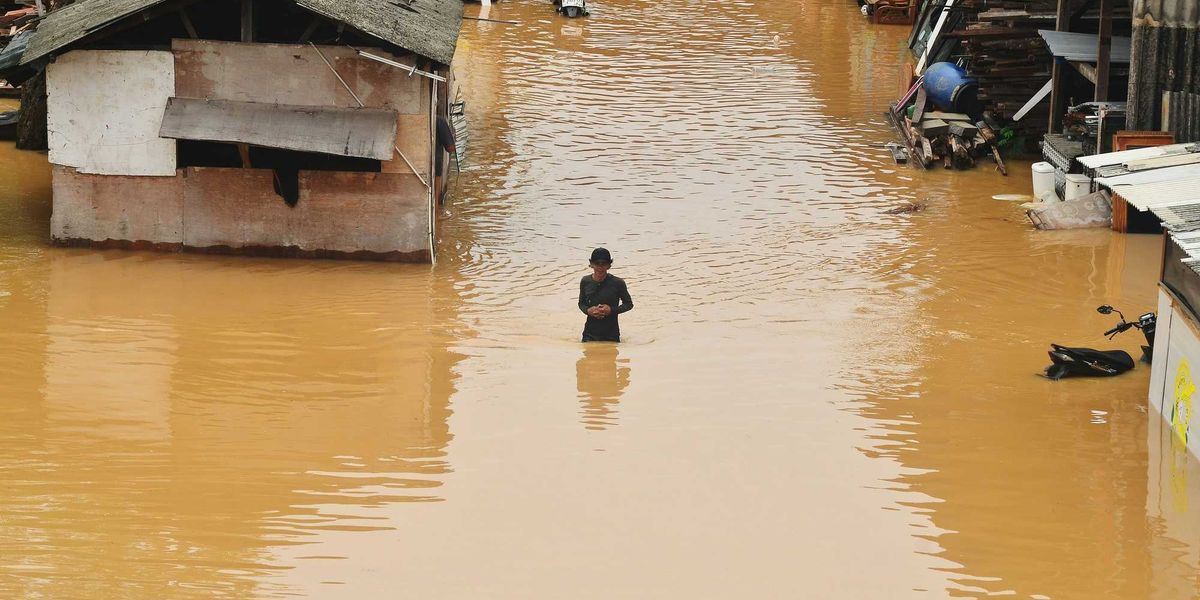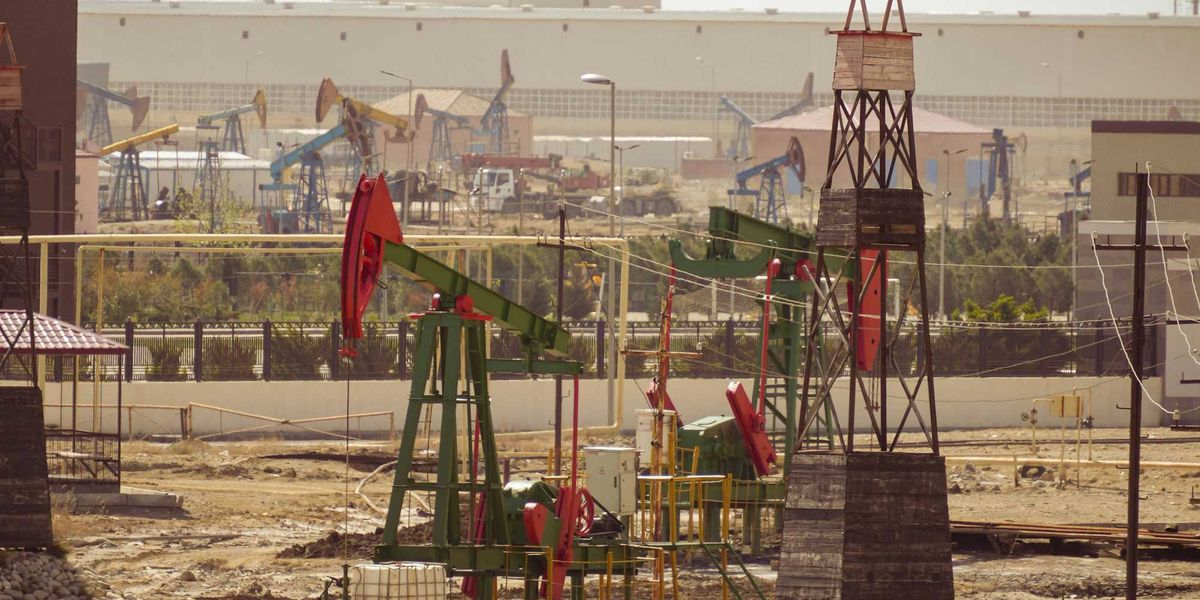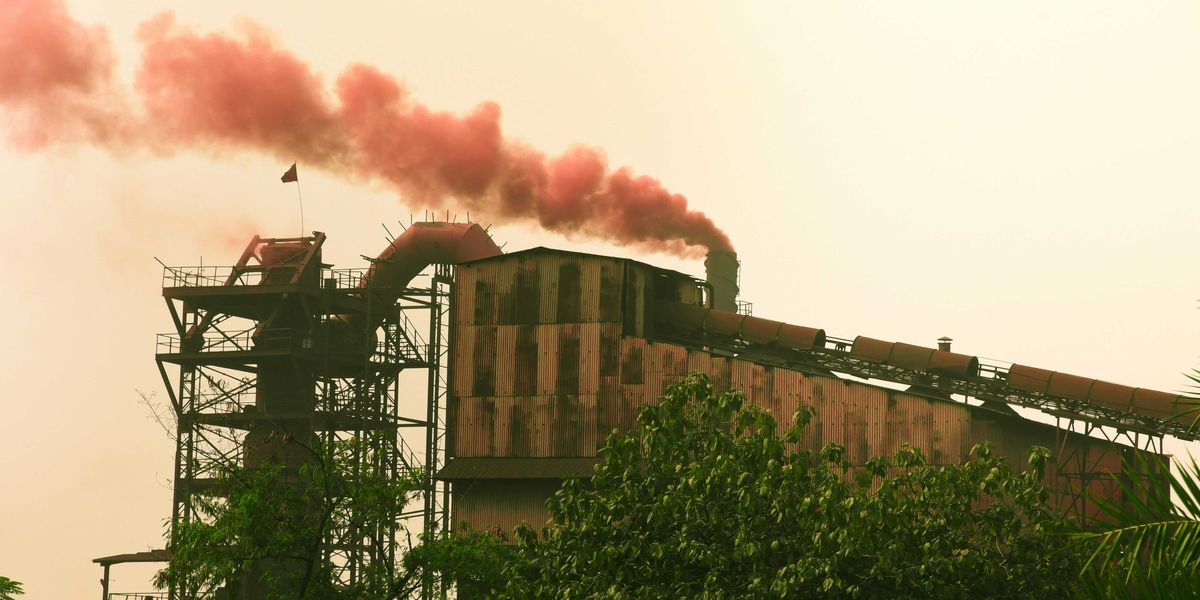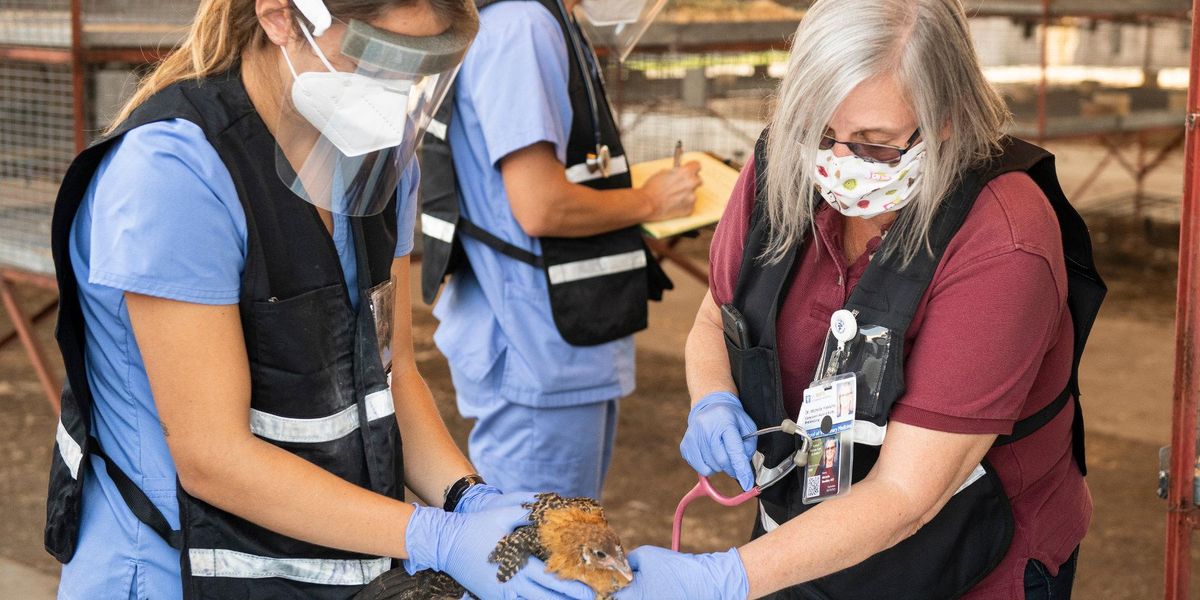
US wildfires’ increasing toll on wildlife
EHN talked to California vets who cared for wildfire-impacted affected animals in 2020.
In Sept. 2020, the 7-year-old female mountain lion was dehydrated and burnt on the bottom of her paw pads.The pain made it unbearable to walk.
According to data from a satellite tracking collar and camera footage, seven months later she is chasing deer, mating, and has even travelled hundreds of miles through the San Gabriel Mountain wilderness in southern California, on those once lifeless feet.
"I'm really proud of that cat," Deana Clifford, a senior wildlife veterinarian and epidemiologist for the California Department of Fish and Wildlife (CDFW), told EHN. "It shows you how resilient those animals are if they're given a chance."
She was found at the edge of a Monrovia resident's backyard pond, where she crawled in search of water during the Bobcat Fire, one of the largest wildfires in Los Angeles County history at 115,000 acres.
After she was transferred to the CDFW's Wildlife Investigations Laboratory in Sacramento, Clifford and a team of vets from University of California, Davis and CDFW spent a month monitoring her progress before releasing her into the wild. To accelerate healing, they applied a special treatment using the skin of tilapia, which can relieve pain, provide moisture, and prevent scarring for burn wounds.
Eventually, Clifford and the team saw her entire attitude change. She wanted to escape her enclosure. She was ready to go home.
This was the first adult mountain lion that Clifford ever treated for burn injuries.
In 2020 the U.S. saw around 57,000 wildfires. More than 10 million acres were burned, thousands of homes were demolished, there were 46 direct deaths, up to 3,000 indirect deaths from smoke, and carbon dioxide emissions from fires were 3-times higher than normal. It was one of the worst wildfire seasons in U.S. history.
The total impacts on fire-affected animals are still a mystery, but the results were not pretty, based on the unprecedented amount of injured creatures brought to California's veterinary clinics.
The Wildlife Disaster Network, a partnership of California vets formed during the 2020 wildfire season in California to treat the influx of burned animals, cared for 22 patients from 10 different fires. While this does not illuminate the true toll of California's summer wildfires, each animal had to be met with all hands on deck.
"They mostly came in with burn injuries, very commonly to their face and paws, some of them had eye injuries, and smoke inhalation was also common," Lorraine Barbosa, a veterinarian for the Oiled Wildlife Care Network and a member of the Wildlife Disaster Network, told EHN.
According to Barbosa, the 2020 wildfire season resulted in the most animals cared for by California vets of any recorded fire season.
Now in 2021, about 98 percent of land in Western states is in a drought, according to the National Interagency Fire Center. The forces of climate change are creating the perfect conditions for more frequent and intense wildfires. Over the last few decades, annual large fires in the American West have tripled, and wildfire season has become more than three months longer, according to the Environmental Defense Fund.
EHN talked to California vets who cared for affected animals in 2020 to get a sense of the toll that more frequent and intense wildfires are having on wildlife.
“He was quiet, very dehydrated, he smelled like smoke”
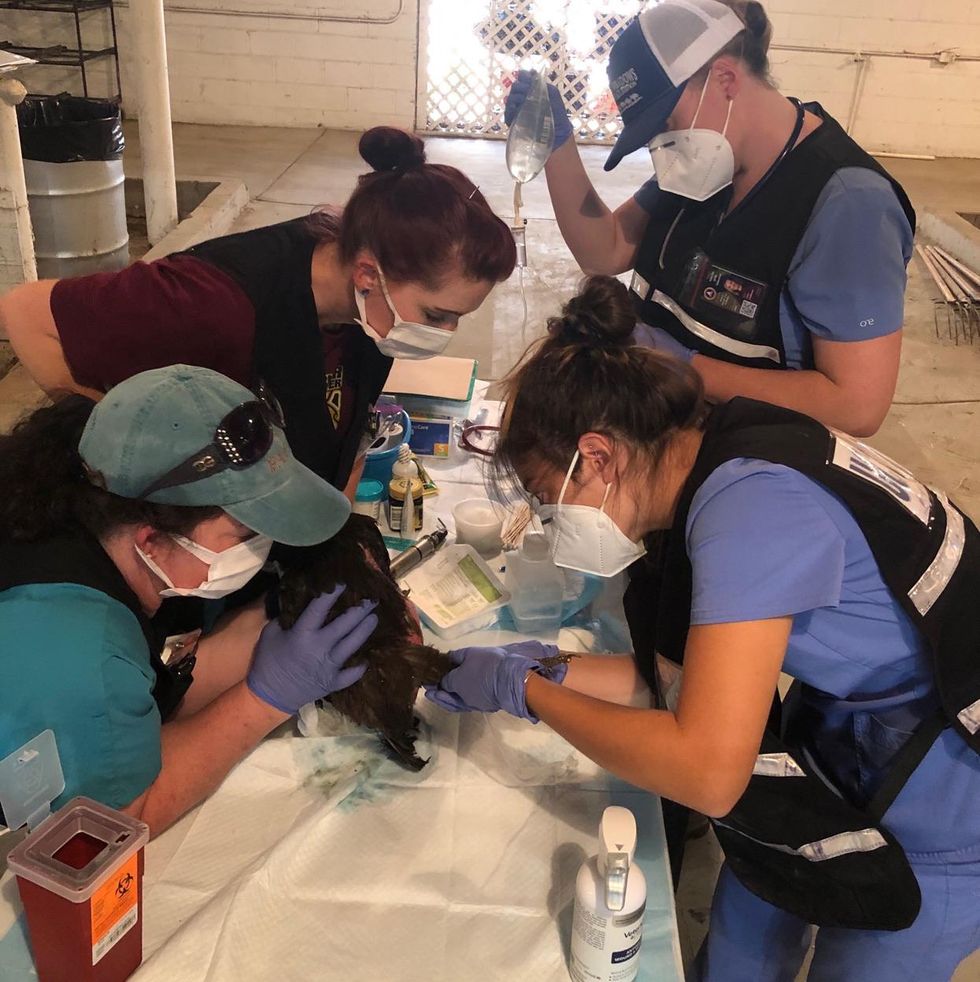
UC Davis Veterinary Emergency Response Team in 2020. (Credit: UCD-VERT)
About 400 miles south of the CDFW clinic in Sacramento, "Burnie" the racoon got a second chance after being trapped in the Blue Ridge Fire, which burned more than 14,000 acres in Orange and San Bernardino counties.
Burnie, a large adult male, was found caught in an abandoned Havahart animal trap by an evacuated property. The fire surrounded him, leaving first- and second-degree burns on his paw pads and legs.
On Nov. 2, he arrived at the Wetlands and Wildlife Care Center of Orange County.
"When he came in he was quiet, very dehydrated, he smelled like smoke," executive director Debbie McGuire told EHN. "The smoke and soot have really bad elements in it, so you have to get that off their fur."
According to Barbosa, toxics from smoke and soot infiltrate the bloodstreams of these animals through inhalation or through licking their fur to clean themselves.
"Once it gets into their system, it can cause a number of issues including kidney and liver toxicity and heart abnormalities," Barbosa said.
McGuire and her veterinary team washed the ash off, cleaned wounds with a sterile saline flush, and applied Thermazene cream, a treatment originally developed for humans with severe burns.
After 17 days, Burnie was released near the top of the Santa Ana River, near where he was first discovered.
Tough decisions
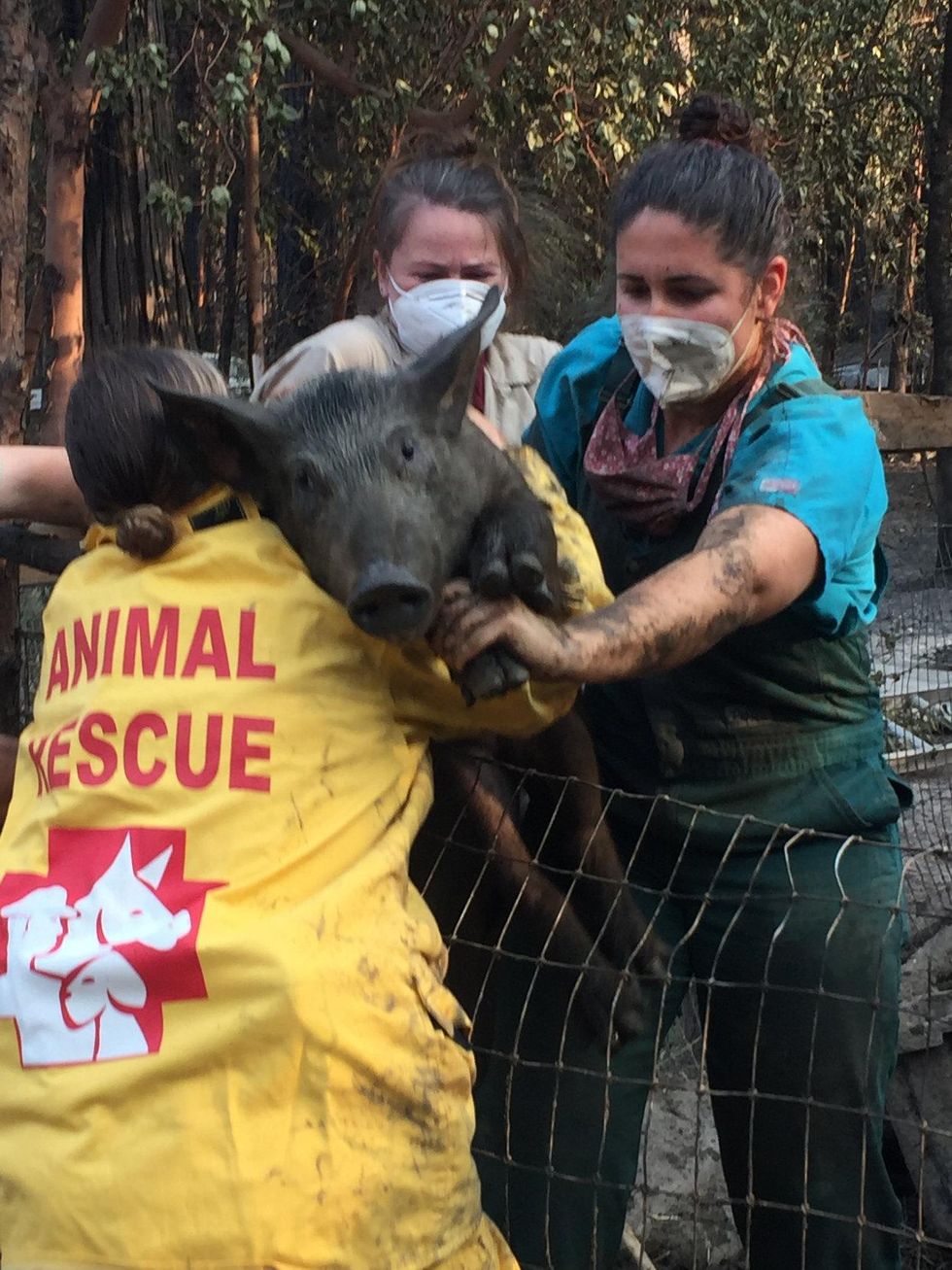
UC Davis Veterinary Emergency Response Team rescues pigs during the 2020 wildfire season. (Credit: (Credit: UCD-VERT)
During the 2020 wildfire season, veterinarians like Jamie Peyton, Chief of Integrative Medicine Service at the University of California, Davis Veterinary Medical Teaching Hospital, had to make tough decisions.
"Some of the animals we rescued, I ended up having to euthanize," Peyton told EHN.
As the North Complex Fire burned through 318,935 acres of Plumas National Forest, somebody noticed a bear crawling near the roadside. When bears burn their feet badly, they tend to walk on their elbows, Peyton said.
After the man reported the bear's location, Peyton, her husband, another veterinarian, and a biologist mobilized.
When the team arrived, the bear wasn't around.
"Our motto is we put on our backpacks and we go tracking," Peyton said.
They hiked through the burned, rugged wilderness for about an hour, following bear footprints that had no toes.
They found the injured bear by a stream. They sedated him, and Peyton's husband and the other veterinarian carried him for nearly two miles.
Back at the road, the team examined him to find that he lost all toes on his front two feet, he had third-degree burns reaching down to his bones, and some bones were sticking out.
"The reality was he would never be releasable again," Peyton said.
Although Peyton and the team had to euthanize the bear, he will be part of future research focused on identifying the toxics animals are exposed to during fires.
"Even the unsuccessful stories still have a role and they're still important," Peyton said.
Pets impacted as well
The 2020 wildfire season also took a toll on domesticated animals.
"Some people can evacuate their animals before the fire when they get a warning to evacuate," said Lais Costa, team coordinator for the UC Davis Veterinary Emergency Rescue Team. But this isn't the case for everyone.
According to Costa, domesticated cats are notorious for getting caught in fires.
Cats often panic when their owners panic, leading them to run away during stressful events such as wildfires.
"They're the ones that get the worst burns in terms of house pets," Costa said.
Dogs, however, tend to be evacuated easier. They tend to latch onto their owners during these stressful situations.
“It is one of the major impacts of climate change that we’re seeing”
In the American West, drought conditions are setting up what could be one of the driest years in a millenium. Eight western states have areas experiencing exceptional drought conditions, meaning high forest mortality, drying wetlands, and low survival of native plants and animals, according to the U.S. Drought Monitor.
"It is one of the major impacts of climate change that we're seeing," Nikil Advani, director of climate, communities and wildlife at the World Wildlife Fund (WWF), told EHN. "Fire conditions are exacerbated by it being extremely dry and also very hot, and it creates what we call these 'tinderbox conditions.'"
During severe wildfires, some animals know how to escape. But urbanization has made this more difficult, Advani said.
"As humans, we've destroyed so much habitat and we've confined species to these little isolated pockets," Advani said. "If those areas get struck by a fire, they often don't have anywhere to go."
For Barbosa, this human destruction drives her passion for healing wildlife communities during fire season.
"We have some responsibility to mitigate the effects of these disasters we're unfortunately helping to cause," Barbosa said.
Banner photo: UCD-VERT - 2020 response to wildfires. (Credit: UCD-VERT)




